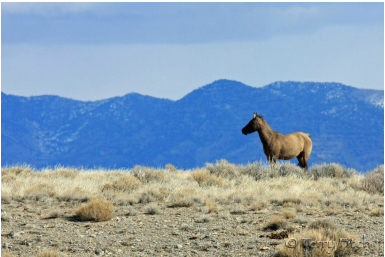Insulin Resistance and Breed Differences
|
Anyone who has owned or cared for a “good-doer” will have experienced the frustration of keeping body condition down, whilst still feeding enough forage to keep the digestive system functional. This is made doubly hard if the horse appears to have “equine metabolic syndrome” (EMS). This term describes horses who present with general or regional (fat-deposits) obesity, hyperinsulaemia, insulin resistance (IR) and are considered to be at high risk for laminitis.
Diet and lifestyle have obvious roles in weight gain, however it is clear that certain breeds of horses, including many Baroque breeds, seem to be more prone to obesity and its related diseases. Researchers are beginning to unravel link between metabolic disease and genetics, and recent studies have focused on the Andalusian as an example “good-doer” breed, with interesting results!
|
|
In several studies comparing Andalusian horses, Standardbreds and ponies, it has been shown that Andalusians (and ponies) have a much higher peak insulin response to meals containing sugars and starch than the Standardbred horses – they are relatively less insulin sensitive, therefore more insulin resistant. It is suggested that this difference in insulin regulation is an evolutionary adaptation to feed scarcity – which explains why many of the good-doer breeds are native types originating from harsher environments.
This innate physiological difference is seen regardless of body weight or diet – Andalusians in moderate condition are still relatively IR compared to the Standardbred control. It is important to remember that insulin sensitivity/resistance is a spectrum – while these studies show that Andalusians sit at the higher end, they may not be considered clinically IR, but may be at a higher risk of developing it than other breeds.
|
So, we know from experience that Andalusians tend to be overweight, and research has shown they are more IR than other light breeds, especially when challenged with high sugar/starch diets. Is this a health risk for the breed, or is there a healthy-but-fat scenario? Studies conducted on large groups of Andalusians in Spain suggest the latter. This group found that although almost 70% of surveyed horses were either obese (BCS≥7) or had a “cresty neck” that is often associated with clinical IR, less than 10% were had clinical insulin dysregulation.
|
They concluded that in this breed, body fat, particularly neck crests, is not related metabolic function. Further research showed that neck crest fat in this breed is not a good predictor of metabolic issues, except at the base, where increased fat thickness was linked to increased insulin and leptin levels. Neck crest fat was also not linked to overall body fat or body condition scoring systems.
On the surface, this research appears very contradictory – Andalusians are relatively more IR, but can be fat and cresty and not IR? What does this mean for the nutritional management of your Andalusian (or similar breed)? Diet and lifestyle is key to keeping any horse healthy and metabolically functional, however this research means that it is even more important for these breeds.
|
Diets high in sugars and starches are well known to induce IR, even in normal, healthy light breeds, and so it is essential to keep levels as low as possible, to avoid tipping the horse into clinical IR, especially if the horse is not in heavy work. This means low NSC* hays and pastures (ideally tested, or soaked hays) and no starchy grains or concentrates. This low glycaemic diet should be combined with as much movement and exercise as possible. Exercise both aids in weight loss and even very light exercise has been shown to improve insulin, glucose and other metabolic hormone functions.
|
If diet and management are correct (and the horse is not an extreme case/at high risk of acute laminitis etc.), severely restrictive weight-loss diets should be avoided, as it seems that this breed can be overweight but healthy, and the stress of restricting feed may exacerbate metabolic conditions as well as cause digestive issues such as ulcers and more (see Why does your horse need to eat ALL the time?). Aiming to reduce body weight is of course beneficial for other reasons – joint-health, thermoregulation etc. Slow-feeding and, if tolerated, grazing muzzles can help reduce excessive intake, however depriving a grazing animal of continuous forage is detrimental to health and welfare.
|
|
* For the sake of simplicity and familiarity to readers, I have used the term non-structural carbohydrates (NSC), however this is a broad measurement which isn’t ideal for selecting feeds for insulin resistant horses. As we want to reduce the effect of feed on blood glucose levels for these horses, it is best to select feeds that have a combined ethanol-soluble carbohydrate (ESC – simple sugars) plus starch (rapidly broken down to glucose) level of less than 10%.
|




